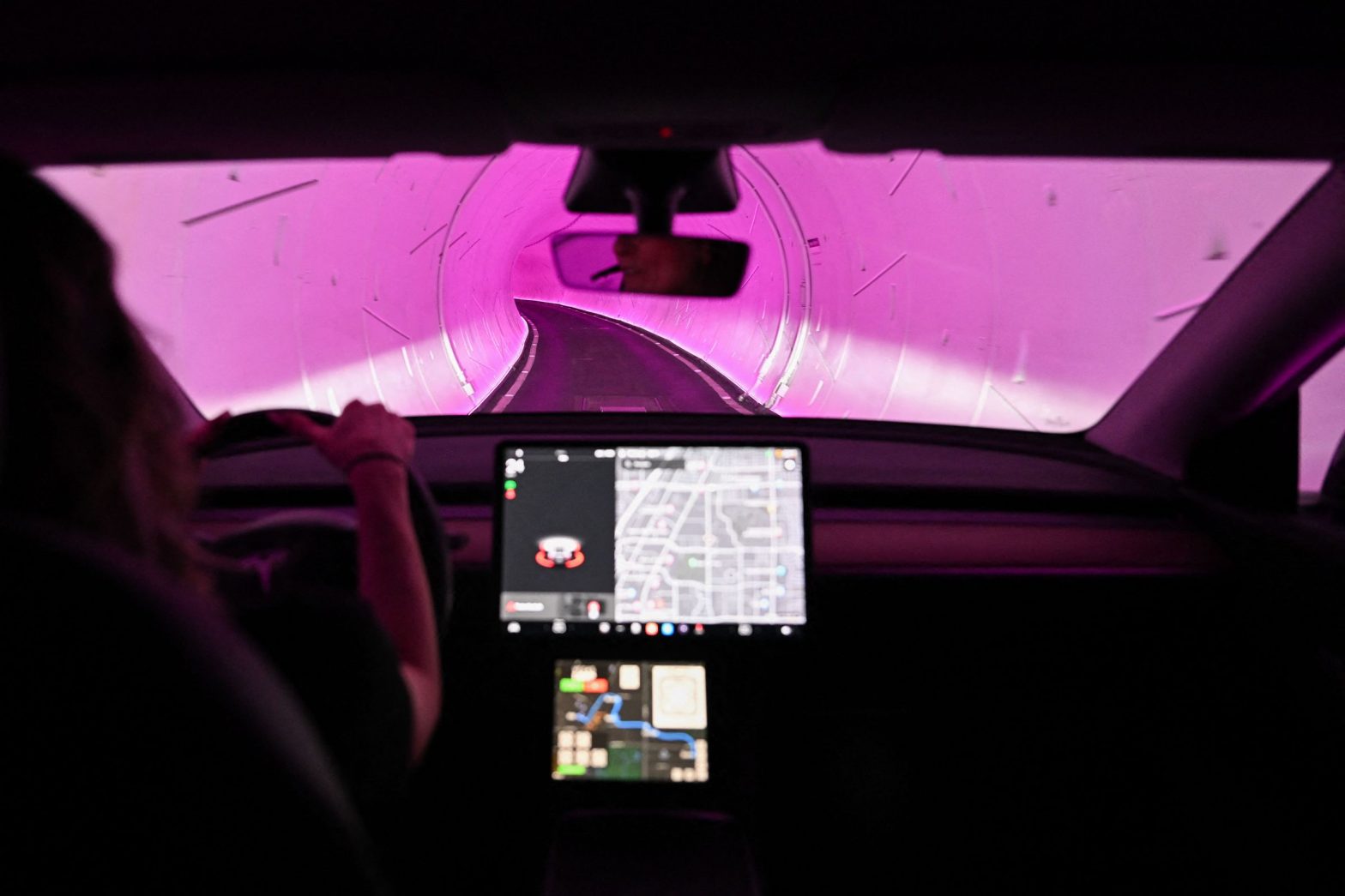/
You know what’s really nice? High-capacity, reliable, fully funded mass transit.
:format(webp)/cdn.vox-cdn.com/uploads/chorus_asset/file/24632342/1246021612.jpg)
The Boring Company, Elon Musk’s mostly unreliable tunnel digging venture, has won the approval to expand its “Vegas Loop” system to — wait for it — 69 stations. Nice? Not really.
The tunnel system is Musk’s supposedly futuristic idea to alleviate road traffic by shifting some of that bumper-to-bumper traffic underground. The expansion, approved by the Clark County Commissioners, allows The Boring Company to construct 25 miles of additional tunnels for a total of 65 miles and 18 additional stations.
The original vision for the Vegas Loop was 51 stations and 29 miles of tunnels — so this represents a pretty big vote of confidence in Musk’s idea of an underground network of Teslas whizzing through tunnels that are only slightly larger than the vehicles themselves.
And it also represents a serious upgrade over the current reality of The Boring Company’s presence in Las Vegas, which is a paltry 2.2 miles of tunnels and five stations — most of which are clustered around the Las Vegas Convention Center and Resorts World.
Of course, Musk’s promise to revolutionize transportation with underground tunnels is, in practice, rather underwhelming. Rather than being whisked along through a futuristic tunnel by an autonomous, high-occupancy shuttle traveling at impressive speeds, riders instead are forced to sit in a Tesla operated by a human driver at speeds often less than 30 mph. Sometimes there’s traffic.
It bears repeating: Musk has simply recreated underground the same failed above-ground systems he claims to want to conquer.
I’m old enough to remember when this was supposed to be a precursor to the hyperloop, an ultra-fast system of pneumatic tubes in which levitating passenger pods would rocket at speeds of up to 720 mph. He sold many cities and states on this vision, including Chicago, Los Angeles, and Maryland — only later to downsize its plans or outright ghost its governmental partners.
To score a permit, Boring had to agree to certain preconditions, one of which was high volume capacity. The company had to run a demonstration showing that it could move 4,400 passengers an hour. It passed and won and received the permit under the category ATS, which stands for Amusement and Transportation Systems, which The Wall Street Journal notes is the same typically awarded to rollercoasters.
To say nothing about the fact that the test most likely didn’t reflect the system’s actual capacity targets in operation. According to Mark Harris, who has been doing an amazing job investigating The Boring Company for TechCrunch, the system may be only able to carry 1,200 people per hour — or a fourth of the promised capacity. If Boring can’t meet the 4,400 people-an-hour target, the company faces stiff fines: $300,000 per trade show for a maximum of $4.5 million.
The only saving grace for Las Vegas is that taxpayers won’t be on the hook for whatever this turns out to be. Boring will finance the tunnels, the casinos and hotels will pay for the stations, and then the company will operate the system and collect revenue from ticket sales.
Much will depend on The Boring Company’s ability to disrupt tunneling, so to speak. The company claims it is designing a tunnel boring machine that can dig up to seven miles a day. But most of its so-called new approach to tunneling — using electrified machines, continuous construction of the tunnel lining — isn’t actually that new, according to experts.
According to the Journal:
Boring’s speed claims are “totally unrealistic,” said Lok Home, president of the Robbins Co., a leading maker of tunnel-boring machines. “There’ll be improvements here, for sure, but there’s not going to be a revolution.”
Industry veterans said that in terms of cost, factors like property acquisition, permitting and engineering work, and the sheer complexity of digging through rock or soil matter far more than tunneling speed.
It may very well be true that people will be willing to pay money to ride in a Tesla underground, especially as the system becomes more spread out and useful. Musk has a carnival barker’s charm, and Vegas residents and tourists can’t pass up a good show. But it will also be competing with above-ground conveniences, like taxis and Uber, or just walking the Vegas Strip. It will need to be faster, cheaper, and more efficient than its current parameters seems to allow.
And what happens when the novelty wears off and people just get tired of sitting in underground traffic jams?
